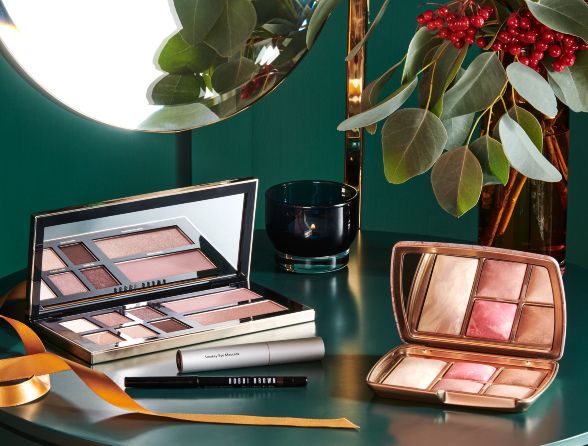How to get a healthy scalp
Keeping your scalp in great condition is the key to great hair. Here’s how to ensure yours is in top shape
It may not be the most glamorous of subjects but – as the cornerstone of gorgeous, glossy hair – caring for your crown is vital. After all, the scalp is essentially just an extension of our faces and therefore subject to the same ageing processes that affect our skin (especially in terms of UV exposure). Luckily hair brands are catching on with a slew of new beautifying products from masks to exfoliators.
We’ve enlisted the help of Anabel Kingsley, top trichologist and president of Philip Kingsley, to get you up to scratch (no pun intended) on the best ways to nurture your noggin.
Signs that your scalp needs some TLC
‘Your scalp displays similar signs to the skin on your face when it needs attention,’ says Anabel. ‘If you notice redness, itching or irritation, or see white or yellow flakes, it needs extra care. If your scalp is very red, painful or inflamed, or irritation is accompanied by hair loss, you should seek advice from a trichologist or dermatologist.’
How to keep your scalp healthy on a day to day basis
‘As with your face, cleansing your scalp regularly and gently will help to keep it in optimal condition,’ advises Anabel. ‘When you shampoo, your main focus should be your scalp, not your hair. After applying your shampoo, (gently but with firm pressure) massage your scalp for approximately 1 minute, squeezing the suds through your hair a couple of times. Then rinse well. Finish off by applying a scalp toner and if you wash your hair less than every other day, shampoo twice.’
Leading up to your period, you may find your scalp gets oilier and more sensitive. If that happens, Anabel suggests swapping your regular shampoo for a soothing anti-microbial one.
‘Like all skin, the scalp is sensitive to general health and diet,’ Anabel says. ‘If you have a tendency to get a flaky/itchy scalp, certain foods may exacerbate symptoms or cause a flare up.’ Trigger foods are not the same for everyone, but Anabel lists full-fat dairy products, such as cheese, as well as champagne, white wine, very spicy and sugary foods and members of the Nightshade family (including potatoes, tomatoes, peppers, and aubergines) as among the worst offenders. ‘Stress can also wreak havoc on your scalp,’ she adds, ‘so it’s important to take steps to manage your stress levels.’
Do I really need a scalp mask?
‘Applying a targeted scalp mask every week or fortnight will also help to keep your scalp healthy,” says Anabel. ‘Depending on what they contain, scalp masks can help to remove any dead skin cell build-up and keep your scalp supple and hydrated.’ She suggests that those with a scalp condition, such as dandruff, use a mask with targeted actives once or twice a week: ‘Look for products formulated with anti-fungal piroctone olamine, soothing ingredients such as camomile and exfoliating salicylic and lactic acid.’
Scalp dos and don’ts
Not shampooing often enough can cause scalp problems. ‘Try to shampoo frequently – leaving no more than 3 days between cleansing’ says Anabel. ‘Remember, your scalp is skin and needs to be cleaned regularly. You can use targeted scalp products between washes to help keep your scalp in good condition.’
Don’t apply conditioner or oil-heavy leave-in styling products too close to your scalp, warns Anabel. ‘These products are formulated for your hair, not your skin – and can weigh down your roots,’ she says. ‘Instead, focus moisturising and styling products on your mid-length and ends. If you have dandruff, do not rub oils into your scalp. Dandruff is an oily scalp condition, and oils will simply make your flakes greasier and may worsen the problem.’
UV ray exposure can damage your scalp and cause peeling and dryness so protect your scalp during the summer by wearing a hat. ‘You can also apply your regular sunblock to your parting, or any other exposed areas of scalp,’ suggests Anabel.
Finally, avoid abrasive mechanical exfoliants. ‘These can damage the delicate tissue of your scalp and can also be rough on your strands,‘ says Anabel. ‘Scalp creams with gentle chemical exfoliants, like salicylic acid, are much better.’
How can I tell what’s wrong with my unhappy scalp?
‘When eczema occurs on your scalp, it’s called seborrhoeic dermatitis which is basically a more severe form of dandruff and occurs when there is an overgrowth of certain yeasts on your scalp,’ explains Anabel. ‘Dandruff causes fine, white flakes that are easily removed. However, people with seborrhoeic dermatitis will often notice greasy, yellow scales that may be stuck-on, and the scalp can be itchy. You may also get areas of scale on your eyebrows, sides of your nose, chest, and/or behind your ears.’
Psoriasis is a different condition altogether, says Anabel. ‘It is autoimmune and results in a too-rapid turnover of skin-cells,’ she continues. ’Psoriasis usually causes bright white, thick plaques to appear on your scalp that are hard to remove and often have bleeding points underneath. The scalp can feel quite tight, but doesn’t always itch. People with psoriasis may have it on other areas of their body, such as elbows and knees and you may also notice changes to your nails, like pitting.’
Seborrhoeic dermatitis can be managed with over-the-counter products but if you have psoriasis you will likely need prescription treatments. ‘As it’s often difficult to diagnose a scalp condition on your own, always seek the help of an expert trichologist if you are unsure,’ says Anabel.
Your route to a happy scalp and beautiful hair










